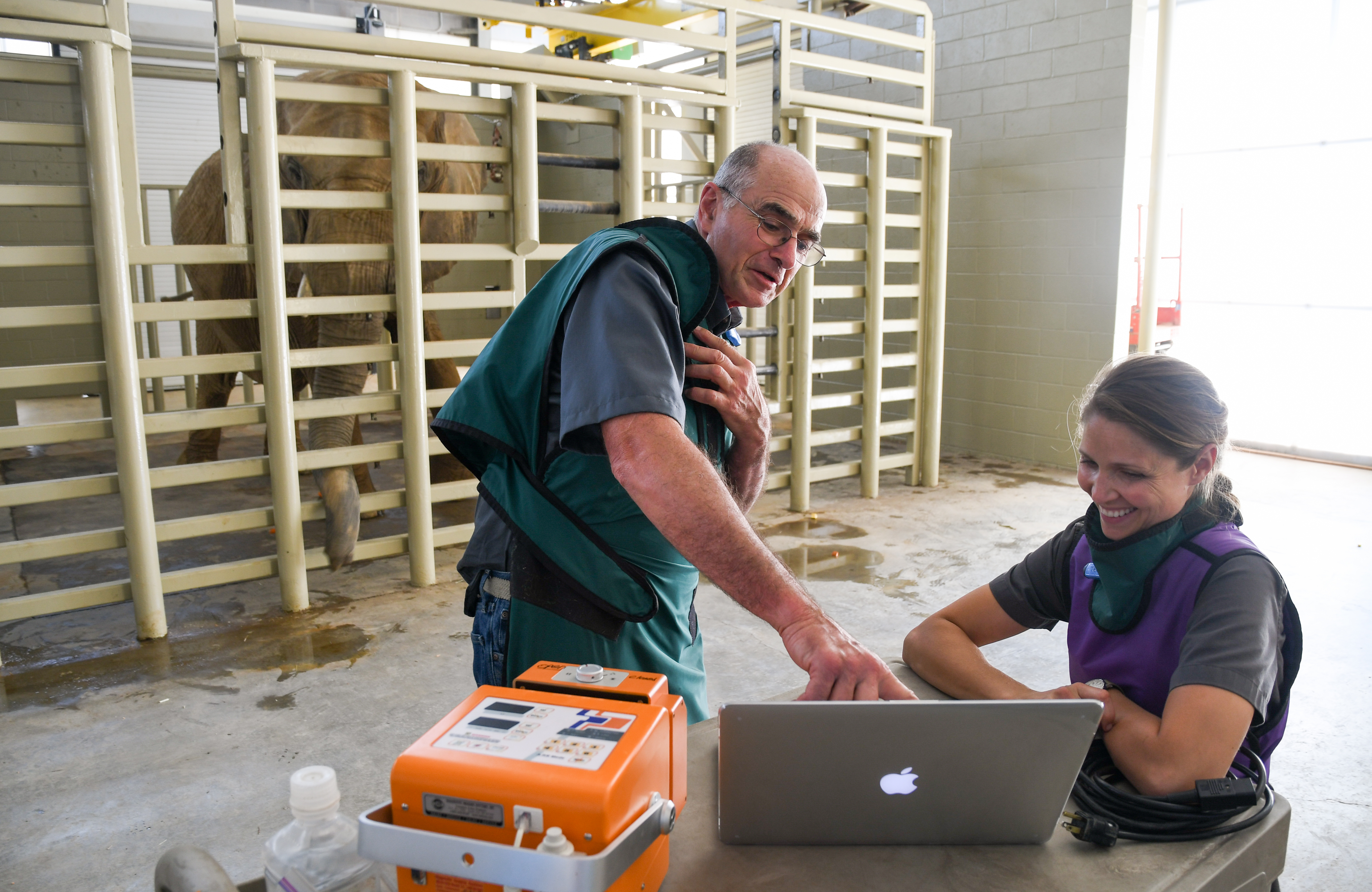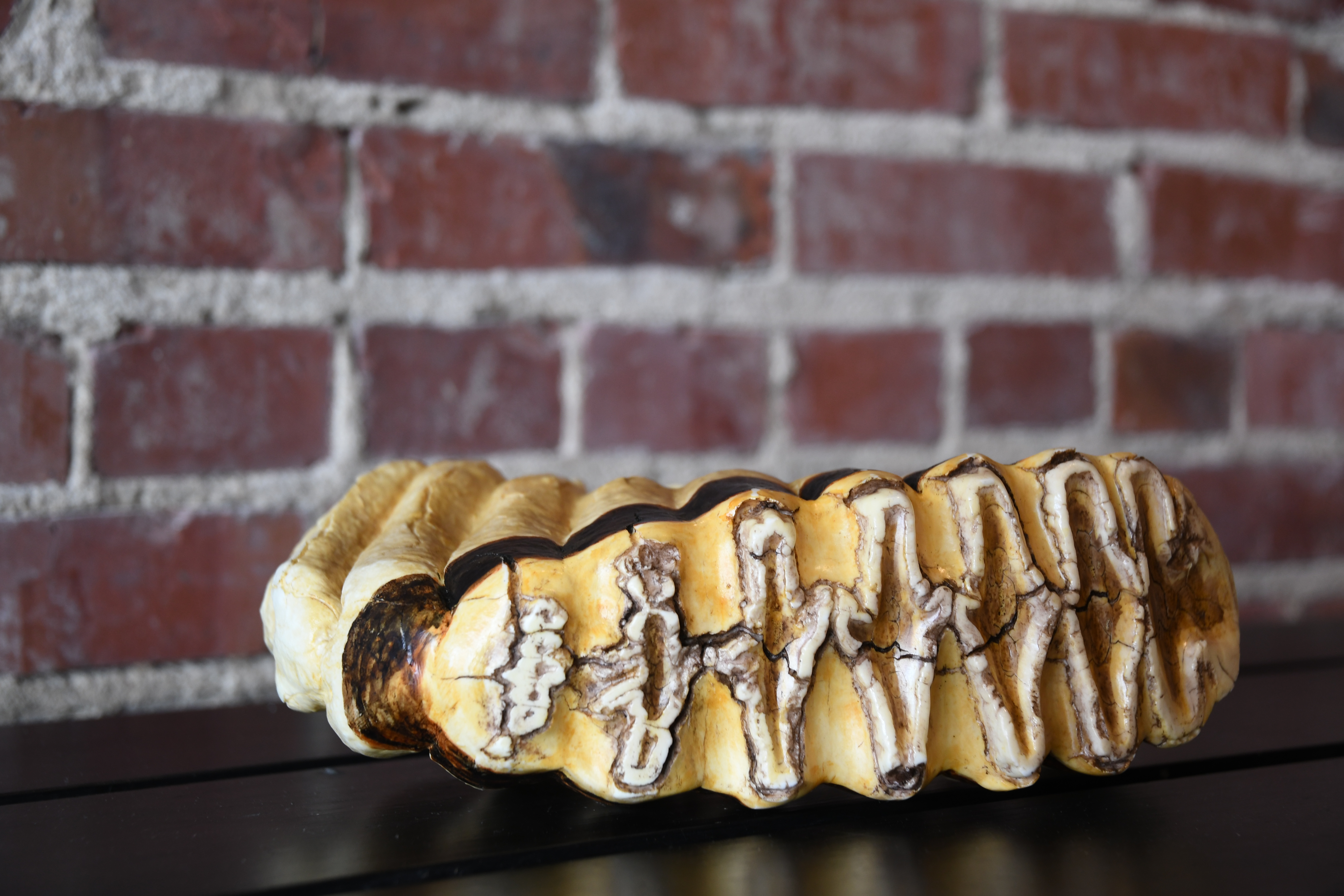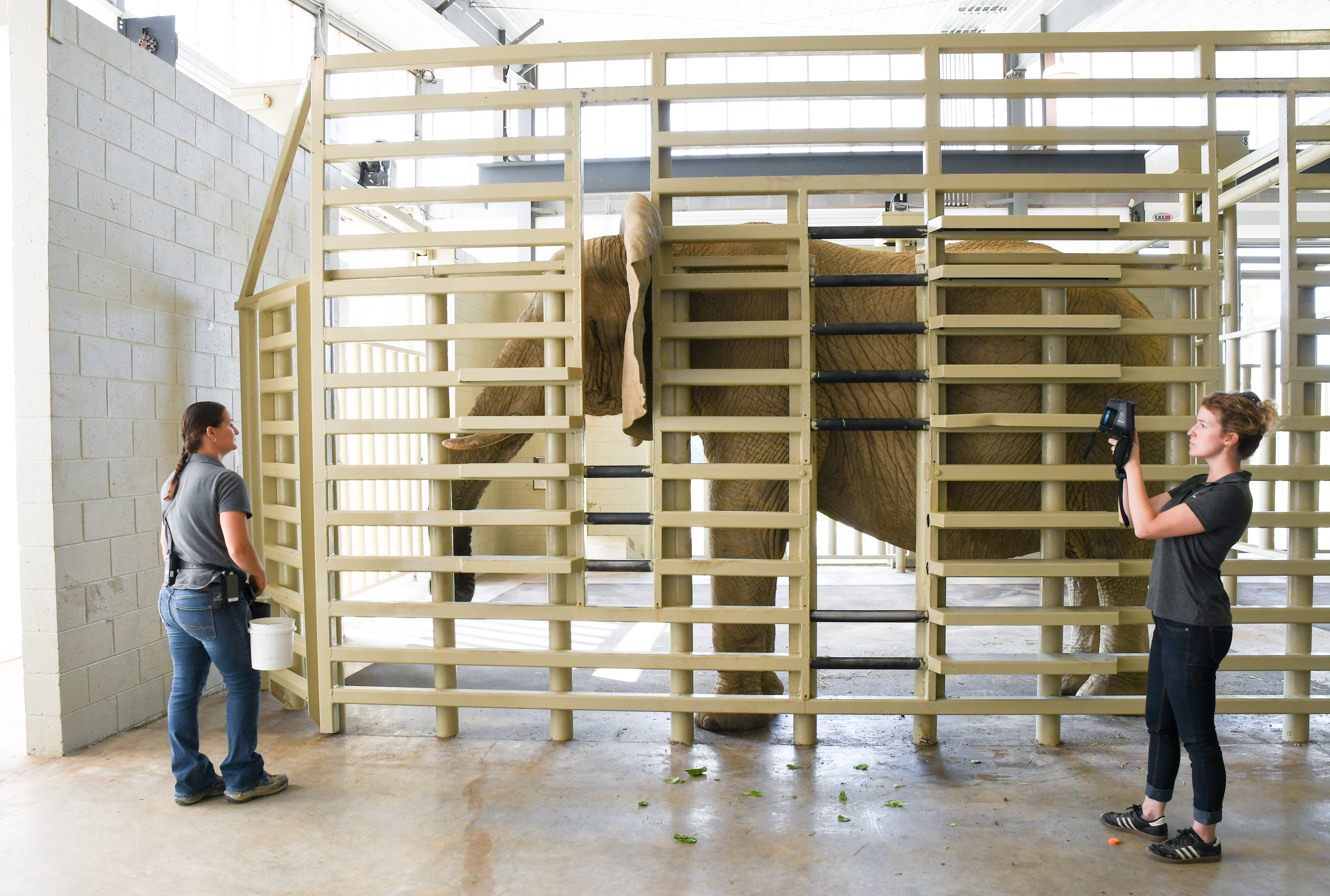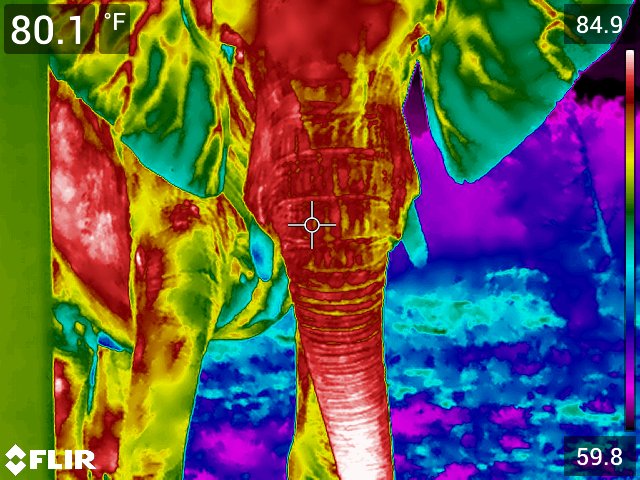
Whole Elephant Care at The Elephant Sanctuary is provided by a Team comprised of Director of Veterinary Care, Veterinarian, Registered Veterinary Technician, Elephant Care Manager, and 18 full-time Caregivers. Caregiver staff undergo extensive training on elephant behavior, husbandry, and all of the aspects needed to properly care for elephants as a species but also learn to care for the specific and individual needs of the elephants that call The Elephant Sanctuary home.
Types of Veterinary Treatment
Cold Laser Therapy

Multi-wavelength cold laser therapy stimulates immune cells and has become an effective method for treating inflammation and arthritis in elephants and aids in healing abscesses, especially in feet. This process requires a tech to administer the cold laser therapy, and a trainer to ask for specific body placements using a bamboo target and reward the elephant for participating. The therapy provides quick relief through a cooling process that only takes a few minutes to administer. At The Sanctuary, we have witnessed elephants present their arthritic joints to the vet without being asked when they see a laser coming out of the case.
Radiographs

Tusk radiographs allow Veterinarians to examine any cracks or internal damage, while foot radiographs allow them to monitor disease and arthritis.
Care Staff prepare for radiographs by detailing a list of all behaviors that will be used, necessary equipment, team members involved and the role each member will play. There is usually a minimum of five people involved: a lead trainer, one or two technicians or secondary trainers, the vet, and a vet technician. The team works to get the elephant comfortable or desensitized to the radiograph block, plate, and generator. Once the elephant places her foot comfortably on the block with no adverse reaction to the team or equipment, images are taken of each toe.
Tusk radiographs are more challenging because the elephant must present her tusks and move them in different positions. Caregivers desensitize the elephant to allow them to touch and examine tusks with the radiograph plate. A ladder is utilized for one of the two main images, so the elephant also must be accustomed to Caregivers approaching her with a ladder. Overall, the entire radiograph process is very fast and minimizes the time that the elephant has to hold a certain position.
Dental Care

Tusks are an elephants’ incisor teeth and are used for defense, digging for food and water, and carrying and lifting. Elephants also have four molars inside their mouths. A single molar can weigh up to five pounds. An elephant goes through six sets of molars in a lifetime. As one set wears down from grinding and chewing plant material, the next set pushes through.
To ensure dental health, elephants at The Sanctuary are trained to lift their trunks and open their mouths so that Care Staff can inspect their teeth. The Vet team takes routine photographs of each elephant’s mouth monthly using an Endoscope and Caregivers work with the elephants regularly to maintain the behaviors required for this process using a Dewalt plumber's camera. An elephant gets rewarded for participating in their dental care—and they receive higher value rewards—like a favorite kind of produce— for higher-level activities. Of course, an elephant is always free to walk away.


Thermal Imaging
Thermal imaging is a completely non-invasive diagnostic tool that senses heat and maps blood flow. Thermal imaging is especially helpful in diagnosing inflammation and localized infection and can be used to monitor the healing process.

At The Sanctuary, Veterinarians take thermal images to track the healing of superficial abrasions as well as monitor chronic arthritis and evaluate changes in blood flow. In the summer, thermal images of the elephants show the amazing effects of the mud the elephants throw on their backs to cool themselves.



